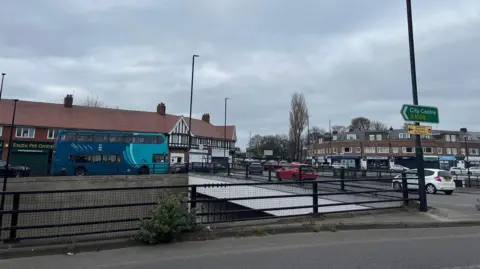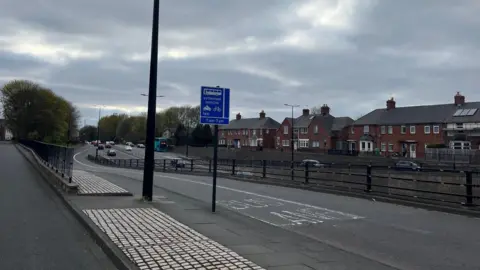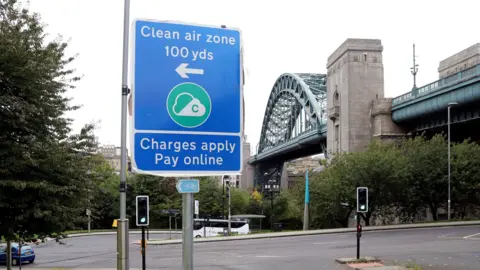Single street scuppers city's pollution target
 BBC
BBCA city may have to wait 20 years to cut pollution levels to legal limits because of issues with a single road.
Stephenson Road in Heaton, Newcastle, has high levels of nitrogen dioxide (NO2) and difficulties tackling the problem means the city is not forecast to meet targets until as late as 2045 -13 years behind the rest of England.
The Department for Environment, Food and Rural Affairs (Defra) said one street could cause an entire area to be considered in breach of legal pollution limits and Tyneside had a particular "localised hotspot".
Newcastle City Council identified that as Stephenson Road and said it "remained committed" to tackling its high NO2 levels.
NO2 is a toxic gas which exacerbates asthma, impedes lung development and raises the risk of lung cancer.
In response to a parliamentary question, Defra said 13 urban areas in England with a population greater than 250,000 exceeded the annual mean limit value for NO2 in 2023.
These included Tyneside, Greater London and the Bristol urban area.

The department said it did not hold "up-to-date detailed modelled projections" on the impact of current policies in reducing NO2 concentrations, but current estimates suggested all failing regions would comply by 2032, except for Tyneside.
It would meet the target by 2045 at the latest, Defra added.
A Newcastle City Council spokesman said Stephenson Road experienced high pollution due to its "topography", as well as it being "a main bus route, busy junction and main route connecting North Tyneside into Newcastle".
They also noted nearby residential streets did not exceed legal limits for the pollutant.
Pollution trap
Prof Margaret Bell at Newcastle University said there could be several reasons why the problem was so bad at this particular site.
In addition to the heavy traffic the road experienced, it was also very close to a grade-separated roundabout, she said, which "traps the pollution".
"There's no ventilation under that roundabout," she said. "So the pollution will be building up and going out at the sides."
Buildings around this "canyon" also sheltered the area from wind, she said, further cutting the level of pollution that could be dispersed.
Also as the roads at the site are on hills, cars are forced to accelerate which produces more pollution, according to Prof Bell.
The council said it was working with the government's Joint Air Quality Unit to tackle pollution issues on Stephenson Road, but it was not possible to "predict a precise date" when levels would become compliant in Newcastle.
 Newcastle City Council
Newcastle City CouncilThe road sits outside of the city's Clean Air Zone (CAZ) which was introduced in 2023.
The local authority said data published since the launch of CAZ suggested "an overall improvement" in air pollution.
Further, both Defra and the council said a transition to low emission vehicles should lead to air pollution levels falling faster.
The city council spokesperson said: "We know that poor air quality is harmful to everyone's health and we remain committed to tackling areas where we are still seeing unacceptably high levels of NO2."
Follow BBC Newcastle on X (formerly Twitter), Facebook and Instagram.
